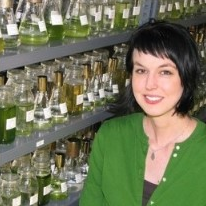Bio-Monitoring of Marine and Fresh Water Toxins in Europe and North America
A special issue of Toxins (ISSN 2072-6651). This special issue belongs to the section "Marine and Freshwater Toxins".
Deadline for manuscript submissions: closed (31 May 2018) | Viewed by 7485
Special Issue Editors
Interests: marine and freshwater detection; toxicology; pharmacology
Special Issues, Collections and Topics in MDPI journals
Interests: marine toxins; cyanotoxins; mycotoxins; detection methods of toxins; mechanism of action of toxins; toxin effects
Interests: harmful algal blooms and proliferations; metabolomics; metagenetics; molecular biology; natural products chemistry
Special Issues, Collections and Topics in MDPI journals
Special Issue Information
Dear Colleagues,
This Special Issue on “Bio-Monitoring of Marine and Fresh Water Toxins in Europe and North America” intends to cover several topics that have the attention of specialists in the field: New and fast methods to detect cyanotoxins and phycotoxins, their chemical variability, the geographical expansion of some of them and the ecology behind this, the toxicological implications and the legal requirements for water and seafood quality. To date, it has been very difficult to identify and link climate change with the presence of a type of toxin in a defined geographical area, especially because human eutrophication and water pollution goes along with the chemical profiles. The expansion of cylindrospermopsin, or the recent appearance of tetrodotoxin as a seafood problem highlights the complexity of the topic. We expect this Special Issue will help clarify the complex science of bio-monitoring cyanotoxins and marine toxins.
Prof. Dr. Luis M. Botana
Dr. Amparo Alfonso
Dr. Schonna R. Manning
Guest Editors
Manuscript Submission Information
Manuscripts should be submitted online at www.mdpi.com by registering and logging in to this website. Once you are registered, click here to go to the submission form. Manuscripts can be submitted until the deadline. All submissions that pass pre-check are peer-reviewed. Accepted papers will be published continuously in the journal (as soon as accepted) and will be listed together on the special issue website. Research articles, review articles as well as short communications are invited. For planned papers, a title and short abstract (about 100 words) can be sent to the Editorial Office for announcement on this website.
Submitted manuscripts should not have been published previously, nor be under consideration for publication elsewhere (except conference proceedings papers). All manuscripts are thoroughly refereed through a double-blind peer-review process. A guide for authors and other relevant information for submission of manuscripts is available on the Instructions for Authors page. Toxins is an international peer-reviewed open access monthly journal published by MDPI.
Please visit the Instructions for Authors page before submitting a manuscript. The Article Processing Charge (APC) for publication in this open access journal is 2700 CHF (Swiss Francs). Submitted papers should be well formatted and use good English. Authors may use MDPI's English editing service prior to publication or during author revisions.
Keywords
- cyanotoxins
- phycotoxins
- biofilm
- bentic cyanobacteria
- climate change
- eutrophication
- bio-monitoring
- detection








